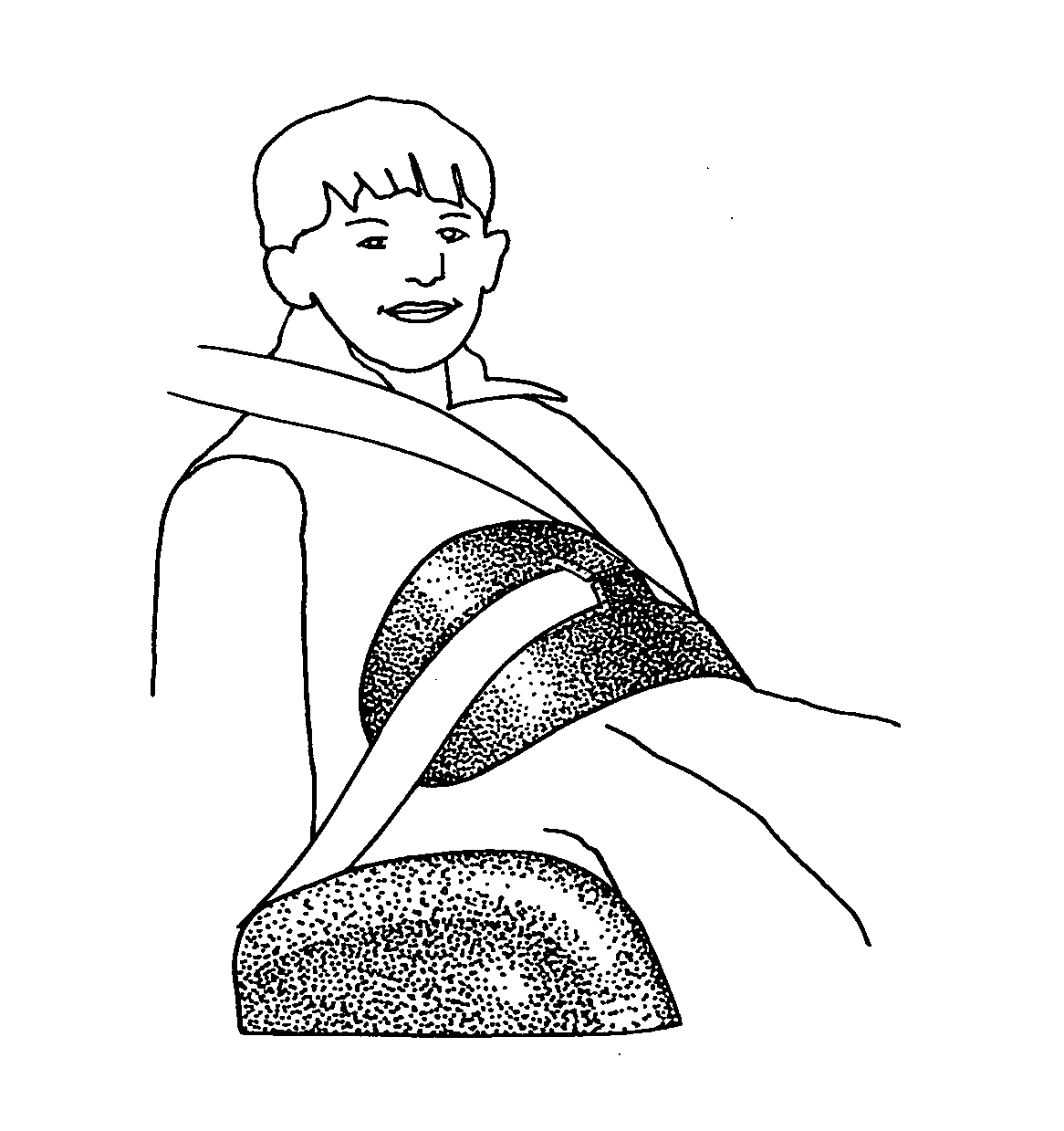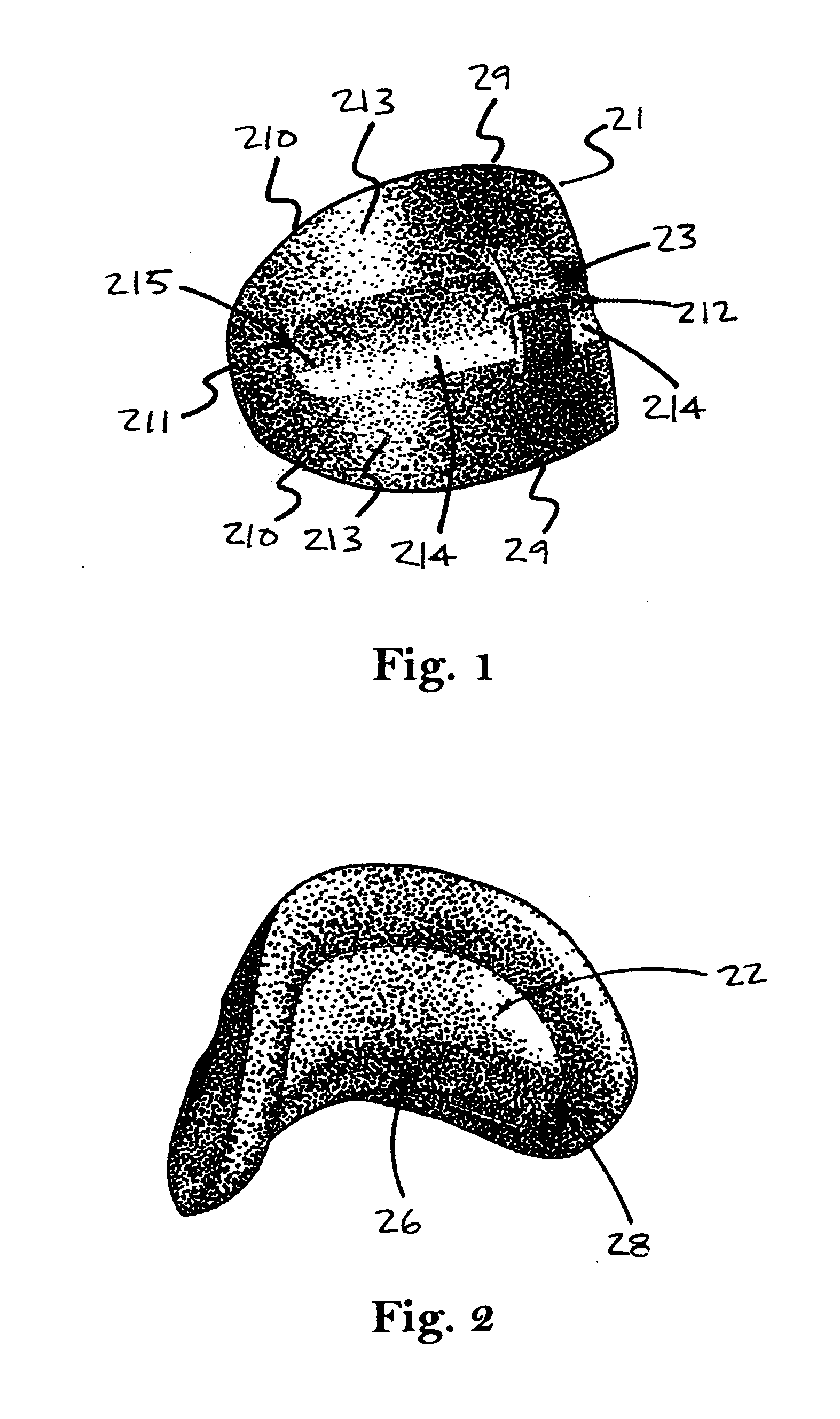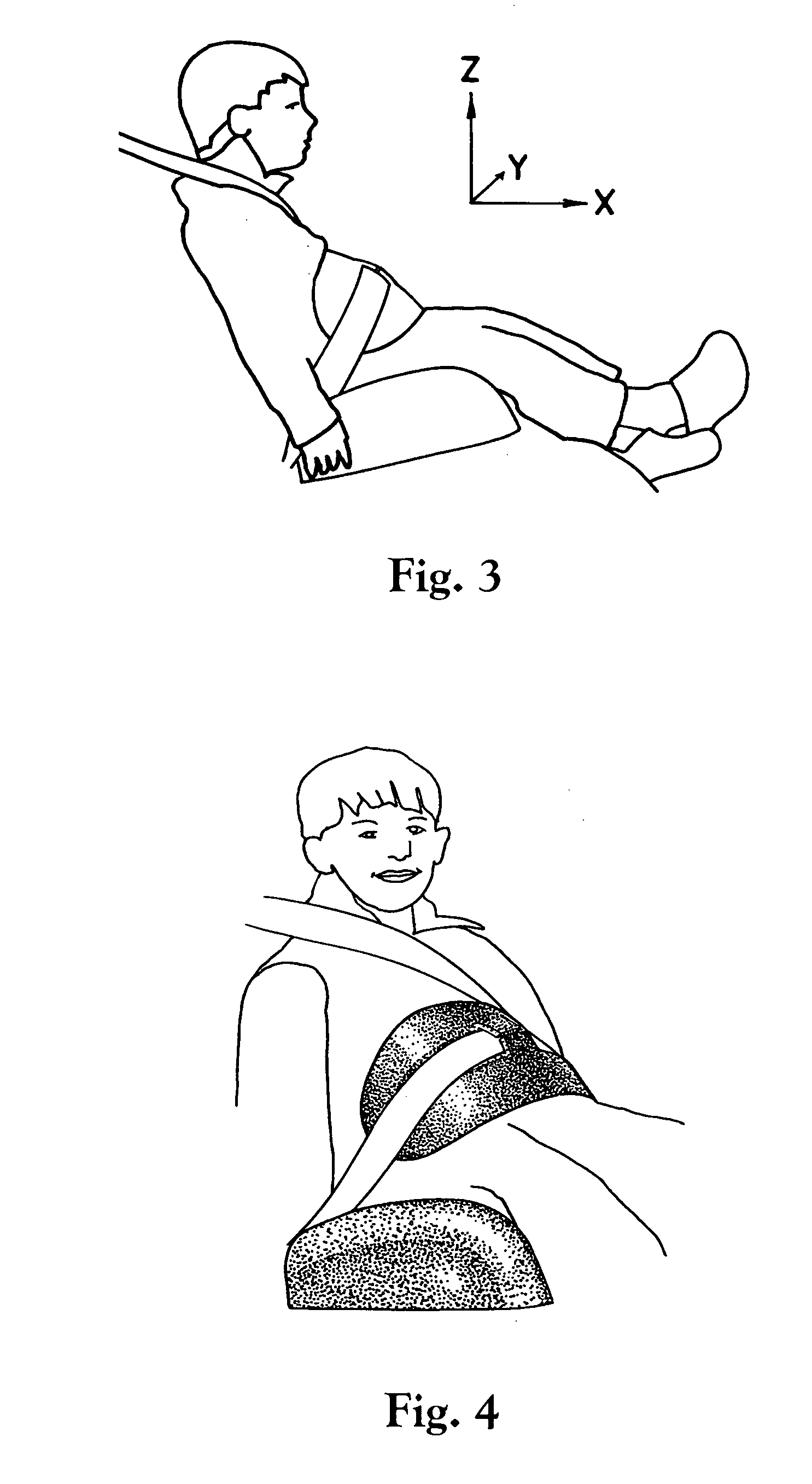Vehicular child restraint and child protection system
a child restraint and child technology, applied in the field of child restraints and child protection systems, to achieve the effect of maximizing advantage and minimizing movement in collisions
- Summary
- Abstract
- Description
- Claims
- Application Information
AI Technical Summary
Benefits of technology
Problems solved by technology
Method used
Image
Examples
Embodiment Construction
[0136]The restraint in its preferred embodiment FIGS. 1, 2 comprises three parts: an outer shell (21) made of a suitable resilient molded plastic bonded to an inner structural component (22) molded in a rigid polymer foam material and a seatbelt retaining clip (23) fixed securely on the front of the plastic shell.
[0137]When viewed in a transverse section FIG. 14 the exterior of the restraint is convex and symmetrical in relation to the median plane and characterized by three wall segments integrally formed: a wide curved middle segment (24) and side wall segments (25) joined at approximately 45° in relation to the middle segment and approximately half as long as the middle segment is wide.
[0138]The exterior shell FIG. 1 is a plastic molding, symmetrical about two perpendicular planes in the form of the afore-mentioned ‘u’ with a front portion characterized by roughly parallel upper and lower edges (29) and side portions with tapered upper and lower edges (210) terminating and joinin...
PUM
| Property | Measurement | Unit |
|---|---|---|
| Resilience | aaaaa | aaaaa |
| Friction | aaaaa | aaaaa |
| Dynamic | aaaaa | aaaaa |
Abstract
Description
Claims
Application Information
 Login to View More
Login to View More - R&D
- Intellectual Property
- Life Sciences
- Materials
- Tech Scout
- Unparalleled Data Quality
- Higher Quality Content
- 60% Fewer Hallucinations
Browse by: Latest US Patents, China's latest patents, Technical Efficacy Thesaurus, Application Domain, Technology Topic, Popular Technical Reports.
© 2025 PatSnap. All rights reserved.Legal|Privacy policy|Modern Slavery Act Transparency Statement|Sitemap|About US| Contact US: help@patsnap.com



